Growing zucchini in your home garden is a delightful and rewarding experience. As an easy-to-grow vegetable, zucchini is a favorite among both beginner and seasoned gardeners.
Known for their prolific nature, zucchini plants can produce an abundant harvest, making them a staple in many summer gardens.
Not only are they versatile in the kitchen, but growing zucchini also adds beauty to your garden with their large, lush leaves and yellow blossoms.
In this article, we’ll explore the benefits of growing zucchini, some of my favorite varieties, and provide essential care tips to help you grow a bountiful crop.
Benefits of Growing Zucchini
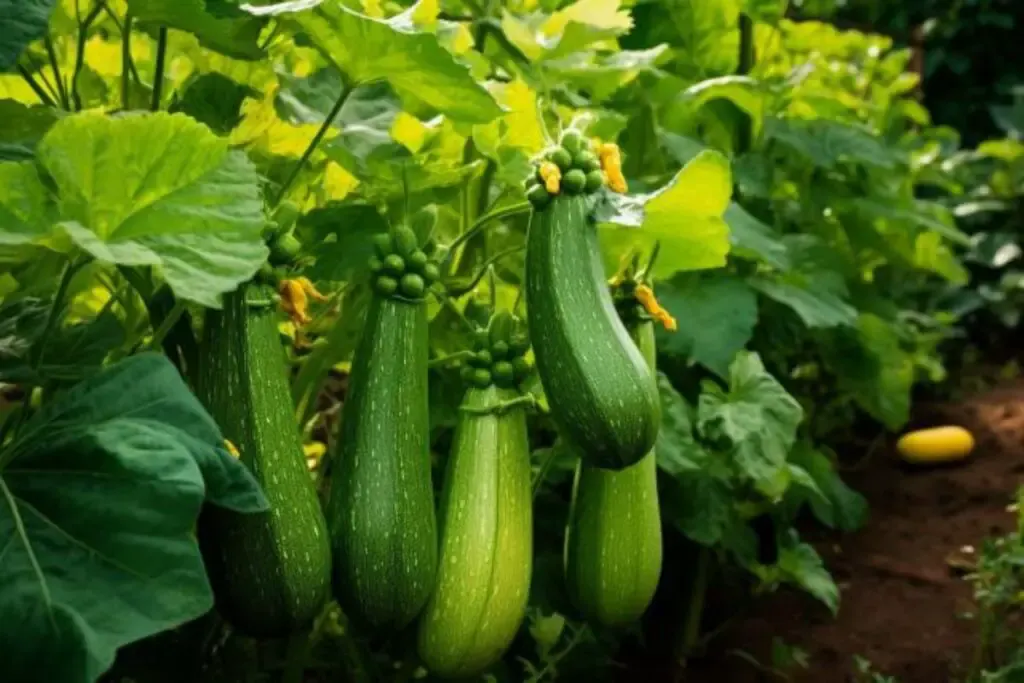
1. Abundant Harvest
One of the most significant benefits of growing zucchini is its prolific nature. A single plant can produce a high yield, providing plenty of zucchinis throughout the season.
2. Health Benefits
Zucchini is low in calories but high in essential nutrients like potassium, manganese, and antioxidants. It’s a healthy addition to any diet.
3. Versatility in Cooking
Zucchini is incredibly versatile in the kitchen. It can be grilled, roasted, baked into bread, or even spiralized into noodles.
Growing it yourself allows you to enjoy this versatility with the freshest produce possible.
My Favorite Zucchini Varieties
Zucchini comes in several delightful varieties, each with its unique characteristics. Here are three that I particularly enjoy:
1. Black Beauty
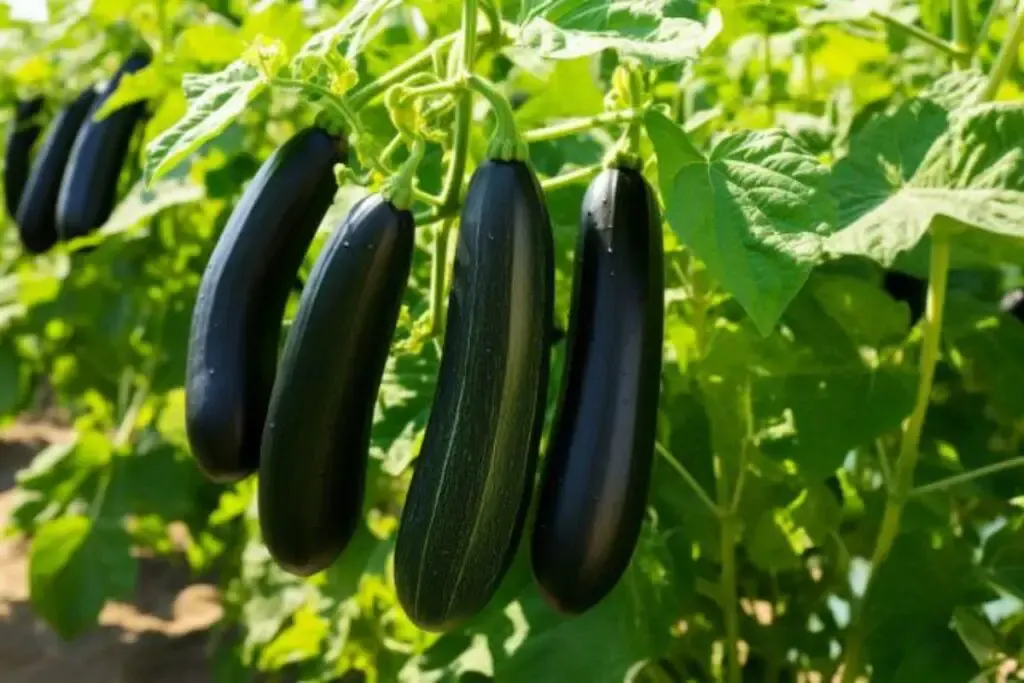
This is a classic zucchini variety known for its dark green skin and creamy white flesh. It’s easy to grow and tends to have a high yield. Black Beauty is excellent for both cooking and baking.
2. Golden Zucchini
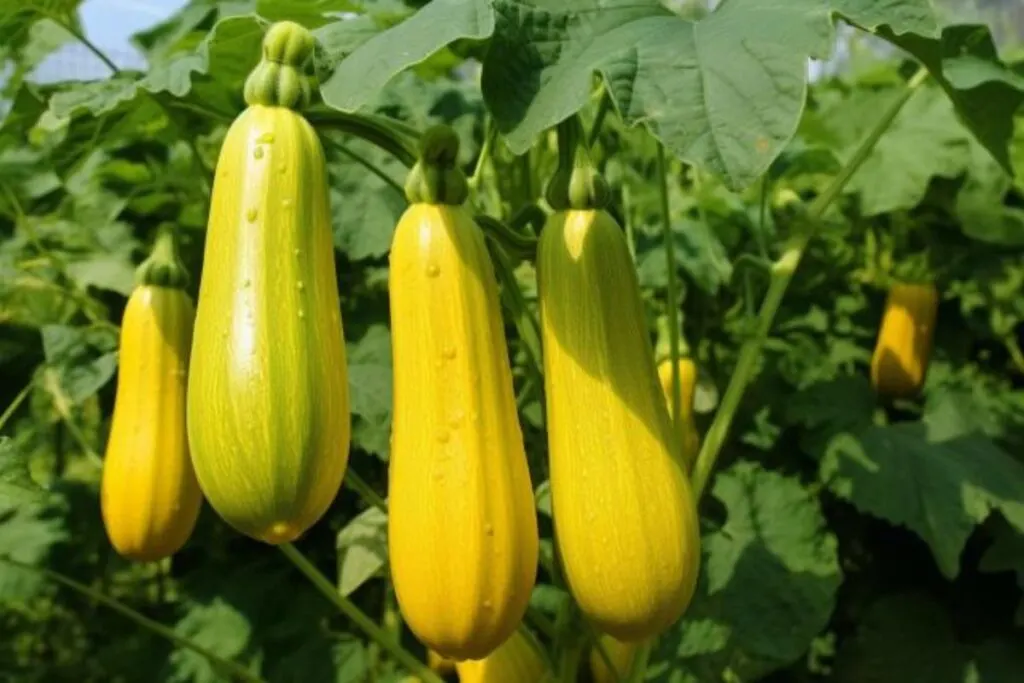
As the name suggests, this variety has beautiful golden-yellow skin. It offers a slightly sweeter flavor than the traditional green varieties and adds a burst of color to your dishes.
3. Romanesco
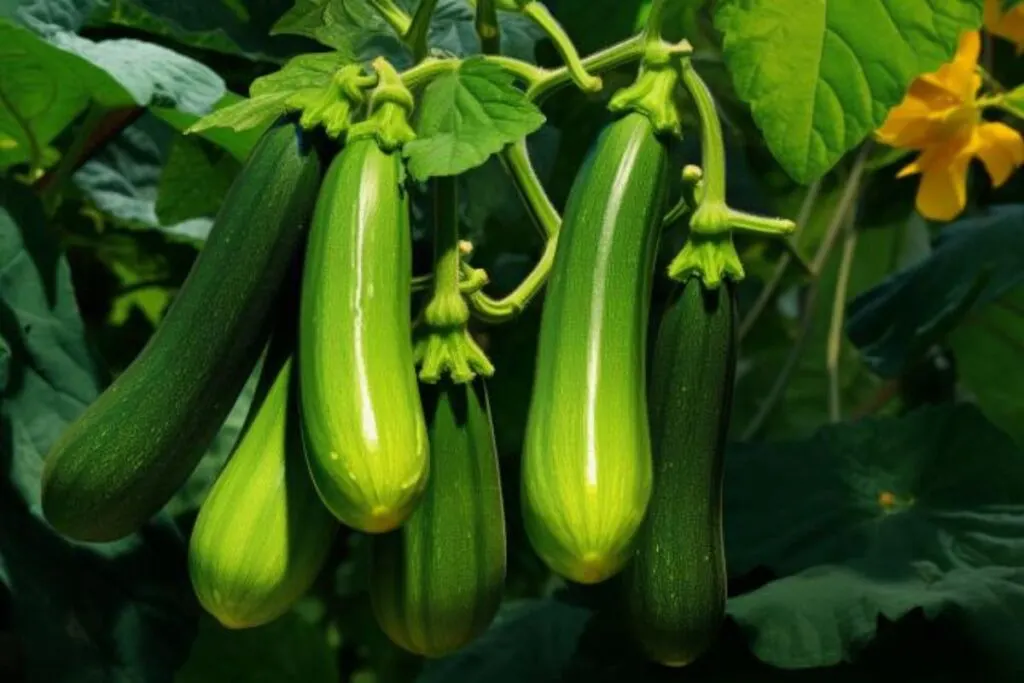
This Italian variety is recognized by its distinct ribbed surface and nutty flavor. It’s less watery than other types, making it ideal for grilling or sautéing.
Zucchini Care
Zucchini is a summer squash that is relatively easy to grow and care for, making it a great addition to any home garden.
With the right conditions and regular maintenance, you can enjoy a plentiful harvest of this versatile vegetable.
Let’s dive into the specifics of zucchini care, covering planting, light, soil, water, temperature, humidity, and fertilizer requirements.
Planting
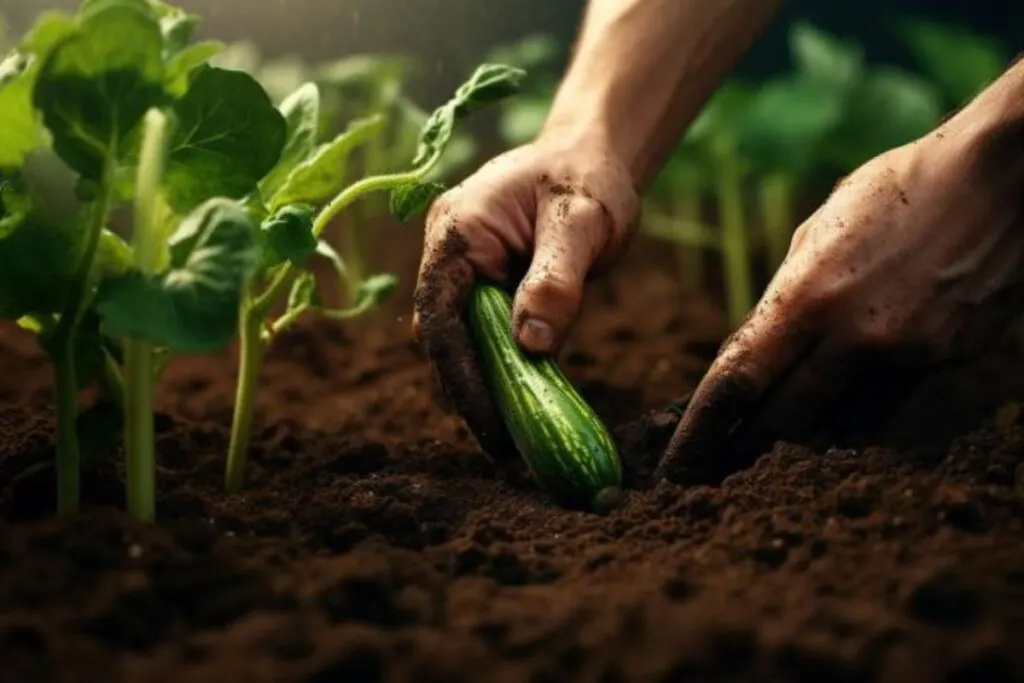
Zucchini seeds should be sown directly into the garden after the danger of frost has passed and the soil has warmed up.
Plant the seeds about an inch deep in the soil. Space the seeds or seedlings about 24-36 inches apart, as zucchini plants can grow quite large.
If space is limited, bush varieties are a good option as they take up less room than vining types.
Light
Zucchini plants thrive in full sun, requiring at least 6-8 hours of direct sunlight per day. Adequate sunlight is essential for healthy growth and a bountiful harvest.
Soil
Well-draining soil rich in organic matter is ideal for growing zucchini. The ideal soil pH is between 6.0 and 7.5. Before planting, it’s beneficial to work compost or aged manure into the soil to improve fertility.
Water
Zucchini plants require consistent moisture for optimal growth. Water the plants deeply, especially during dry spells, to encourage deep root development.
Aim to keep the soil evenly moist but not waterlogged. Using mulch around the plants can help retain soil moisture and suppress weeds.
Temperature and Humidity
Zucchini prefers warm weather and grows best in temperatures between 70°F and 95°F. It’s sensitive to frost, so ensure all danger of frost has passed before planting outdoors.
While zucchini can tolerate a range of humidity levels, proper spacing and good air circulation around the plants can help prevent fungal diseases in more humid conditions.
Fertilizer
Feed zucchini plants with a balanced fertilizer at planting time. A side dressing of compost or a balanced fertilizer can also be applied when the first fruits start to form.
Avoid over-fertilizing, particularly with high-nitrogen fertilizers, as this can promote leaf growth at the expense of fruit production.
Harvesting Zucchini
Harvesting zucchini at the right time is crucial for the best taste and texture. Zucchinis can be harvested when they are about 6-8 inches long for most varieties.
The smaller size ensures that the zucchinis are tender and not overly seedy. Use a sharp knife or pruning shears to cut the zucchini off the vine, being careful not to damage the plant.
Regular harvesting encourages the plant to produce more fruit throughout the season.
Pruning
Pruning is not typically required for zucchini plants, but it can be beneficial for air circulation and disease prevention.
If the plants are very dense, you can prune off some of the larger leaves to allow more sunlight and air to reach the center of the plant. Also, remove any yellowed or damaged leaves to keep the plant healthy.
Propagating
Zucchini is most commonly propagated from seeds and does not propagate well from cuttings. To propagate zucchini, simply save some seeds from a mature zucchini (preferably from an heirloom variety) and plant them the following season. Alternatively, you can purchase seeds each year.
How to Grow Zucchini From Seed
Growing zucchini from seed is straightforward. Plant the seeds directly in your garden after the last frost when the soil has warmed up.
Plant seeds about an inch deep, in groups of two or three, spacing the groups about 24-36 inches apart. Once the seedlings emerge and grow a few inches tall, thin them out, leaving the strongest plant in each group.
Growing in Pots
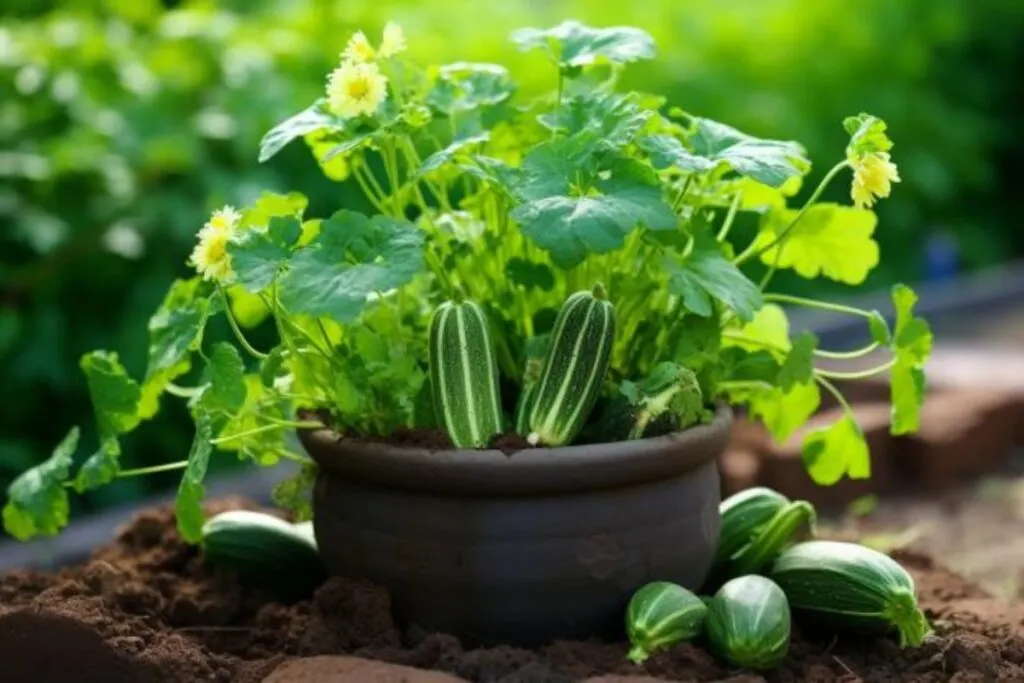
Zucchini can be grown in pots if you have limited space. Choose a large pot (at least 5 gallons) with good drainage. Plant one or two zucchini seeds in the pot and thin to the strongest seedling.
Ensure the pot is placed in a location where it will receive plenty of sunlight. Water regularly and fertilize as you would for zucchini grown in the ground.
Overwintering
Overwintering is not applicable for zucchini as it is a warm-season crop that does not survive frost. Zucchini plants will die off at the first sign of frost, and new plants need to be grown each year.
In climates with a short growing season, starting seeds indoors and transplanting after the last frost can extend the growing period for zucchini.
Transplanting
If you start zucchini seeds indoors, transplant the seedlings outdoors after the risk of frost has passed and the soil has warmed up.
Harden off the seedlings by gradually exposing them to outdoor conditions over a week before transplanting.
Plant them in well-prepared soil, ensuring the spacing is adequate for the mature size of the plants.
Common Pests & Diseases
Zucchini plants can be susceptible to several common pests and diseases. Pests like squash bugs, squash vine borers, and cucumber beetles can be problematic.
Regular monitoring and organic pest control methods can help manage these pests. Diseases such as powdery mildew, downy mildew, and bacterial wilt are also common.
To prevent disease, ensure good air circulation around the plants, practice crop rotation, and avoid overhead watering.
Growing zucchini is a delightful endeavor that adds a lot of value to your garden. These plants not only provide a generous yield of delicious and versatile vegetables but also contribute to the overall health and beauty of your garden space.
With proper care, attention to potential pests and diseases, and timely harvesting, zucchini plants can be a highly rewarding addition to your gardening efforts.
Enjoy the process and the plentiful harvest that this wonderful vegetable brings.

